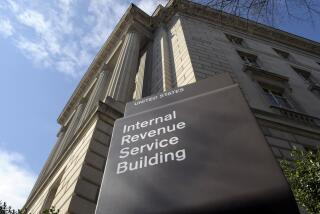Census Count Lags; Residents Urged to Return Forms
- Share via
With nearly two out of every five San Diego households not yet returning their census questionnaires, census officials, hoping to save both time and money, made a final pitch Monday to encourage local residents to mail in the forms.
In the three weeks since census forms were mailed out nationwide, about 61% of San Diego County households--slightly above both Southern Californian and national averages--have returned the questionnaires, census officials said at a downtown news conference.
Hoping to reach their 70% return-rate goal, thereby reducing the number of census takers needed to visit homes that fail to respond, census administrators stressed Monday that there is still time for people who have not yet mailed in their questionnaires to do so.
Starting next week, census takers will begin door-to-door visits to homes that have not yet returned the questionnaires, Michael Weiler, assistant regional census manager for operations, said. That task is expected to last through June.
“It’s not too late to return the questionnaires,” Weiler said. “We’re at a critical point in the census process. Every additional questionnaire that comes in . . . will save us something in terms of resources and cost.”
To promote that message, public service announcements, featuring speakers ranging from President Bush and Miss America to actors and religious leaders, will be aired on television stations here and across the nation next week.
Nationally, for every 1% of the census questionnaires that are not returned, it will cost about $10 million to hire census takers to personally visit those residences, Weiler explained. The estimated cost per house for the on-site visits is about $10, he added.
With about 400,000 San Diego households remaining to be counted--compared to the nearly 600,000 that have returned the forms--it could cost up to $4 million if census takers need to visit each of the homes that, as of Monday, had not responded. But, if census officials reach their 70% return target, a goal contingent upon nearly 100,000 homes mailing in the forms within the next week, the cost would be reduced by about $1 million.
Overall, the cost of tabulating San Diego County’s population is estimated at $7.7 million, a figure based on the assumption that the 70% target will be achieved, said Dan Conway, a census spokesman.
San Diego’s 61% census questionnaire return rate to date ranks slightly above Los Angeles’ 57% rate and 1% behind Orange County’s mark, according to census figures. The average return rate for the 10-county Southern California region is 58%; the national average is 59%, Weiler said.
Language barriers, skepticism over the census data’s confidentiality and simple procrastination are among the major factors that census officials say prevents people from returning the questionnaires. Others, officials said, might dismiss the census forms as a kind of governmental junk mail--unaware, perhaps, that the decennial calculation of the nation’s population is used to apportion congressional seats and allocate tens of millions of dollars in federal revenue.
“When we think about the 1990 census, three words best describe that process--it’s important, it’s easy and it’s safe,” Weiler said. Seeking to allay concerns about the privacy of the census material, Weiler reiterated that the information included on the census forms is not shared with any other governmental agency.
At Monday’s news conference, census officials encouraged individuals who have not yet returned their census questionnaires but still have the forms to return them within the next week to avoid the time and expense of dispatching a census taker to their home. Persons who have discarded or misplaced the forms they received last month, however, should call the local census office for a replacement, fill it out and keep it until a census taker picks it up, Weiler said.
“We have to carefully control replacement questionnaires so there aren’t duplications,” Weiler said, explaining why officials prefer that the replacement forms not be mailed to census offices.
About 2,600 temporary census takers will be needed to visit homes in San Diego and Imperial counties from which questionnaires are not returned, Weiler said. Although about two-thirds of those jobs have been tentatively filled, officials still need to hire about 800 workers, Conway added.
More to Read
Sign up for Essential California
The most important California stories and recommendations in your inbox every morning.
You may occasionally receive promotional content from the Los Angeles Times.













